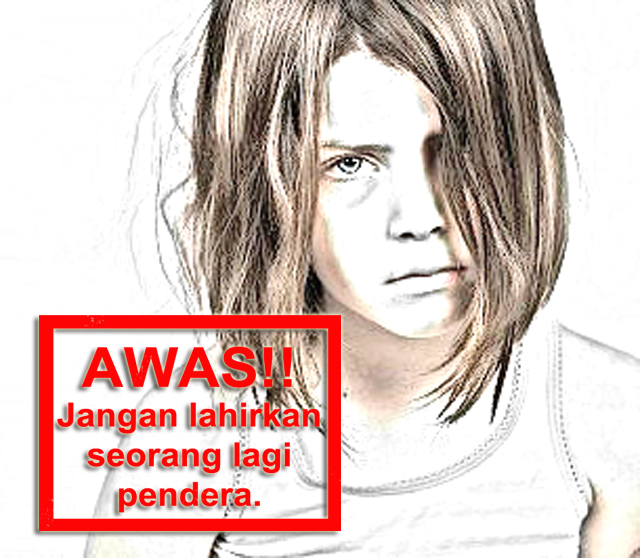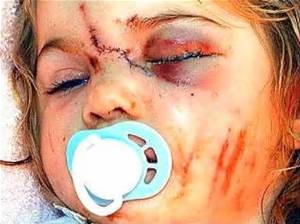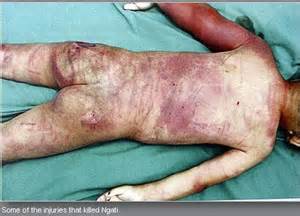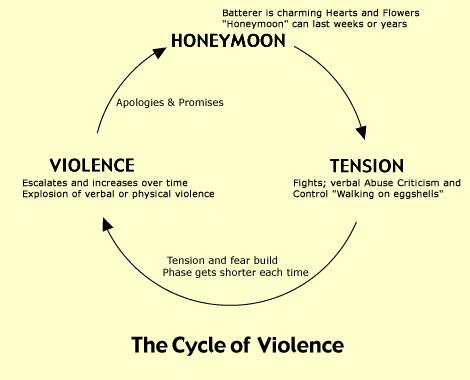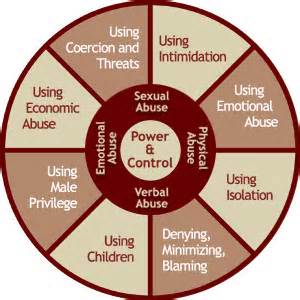Future Without Violence: Battered Victim And Child Abused
Violence
According to the interpretation of WHO (World Health Organization), violence is defined as an intentional use of force, threat or gross exaggeration, towards ownself, other people, or against a group or community either results in or has a high likelihood of resulting in injury, death, emotional disorders, stunted growth or distress.
On the other hand, the Domestic Violence Act 1994 (Act 521) interprets violence as conduct of one or more of the following acts:
- Wilfully or knowingly placing, or attempting to place, the victim in fear of physical injury;
- Causing physical injury to the victim by such act which is known or ought to have been known would result in physical injury;
- Compelling the victim by force or threat to engage in any conduct or act, sexual or otherwise, from which the victim has a right to abstain;
- Confining or detaining the victim against the victim’s will; or
- Causing mischief or destruction or damage to property with intent to cause or knowing that it is likely to cause distress or annoyance to the victim;
- Causing psychological abuse which includes emotional injury to the victim;
- Causing the victim to suffer delusions by using any intoxicating substance or any other substance without the victim’s consent or if the consent is given, the consent was unlawfully obtaines; or
- In the case where the victim is a child, causing the victim to suffer delusions by using intoxicating substance or any other substance, by a person, whether by himself or through a third party, against;
- His or her spouse;
- His or her former spouse;
- A child;
- An incapacitated adult; or
- Any other member of the family;
Child abuse
The interpretation from the Child Act 2001 (Act 611) states that a “child” is defined as:
- A person under the age of eighteen years; and
- In relation to criminal proceedings, means a person who has attained the age of criminal responsibility as prescribed in section 82 of the Penal Code [Act 574].
Child abuse is a generic term covering all the circumstances of the ill-treatment of a child. It includes physical and sexual attacks that seriously and also cases where the level of care does not reach a reasonable expectation. “HM Government (2006) Working Together to Safeguard Children: A guide to inter-agency working to safeguard and promote the welfare of children” classified child abuse into four broad categories, namely:
- Physical abuse
- Sexual abuse
- Emotional Abuse
- Neglect
|
a) Example of child physical abuse
(Source: www.pioneerhouselearning.com) |
b) Example of bodily injuries sustained by a child
(Source: www.justiceforchildren.org) |
Mangsa
Victims A large percentage of statistics shows women and children often become victim to domestic violence and abuse. In general, women may feel confuse and afraid because the repetitive behaviour cycle of their partner; from love, temper showing or torturing to guilt and regret. Domestic violence is very damaging to children; whether they experience it themselves or see or hear when it happens to a parent, brother or sister. Treated with violent and witnessed the violence affects children of all ages and can affect how they handle conflict later on in their lifetimes. A violence culture may be inculcated in these children as a common family relationship.
|
c) The Cycle of Violence
(Source: www.lovetakestime.com) |
d) The Power and Control Wheel
(Source: www.familycrisiscenters.com) |
Although women and children are always the victim of abuse, however, men can be victims of abuse and domestic violence. Men are usually the victim of verbal and emotional abuse. Most often than not, they are ashamed to seek help.
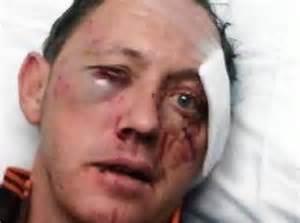
e) Man as domestic violence and abuse victi
(Source:www.chaufeaudumur.hubpages.com)
Violence causes children to feel confused, sad, angry and afraid. The way they express themselves depending on their age and level of development. The feeling of babies and young children are reflected in their behaviours. If a parent is stressed, the children will feel stress indirectly. Meanwhile young children may also blame themselves for violence. Children in school usually like to hide what was going on in their homes from friends. Teens may feel angry and blame violent parents or parents who have been abused as well as feel burdened to protect the abused family members. Some of them can engage in violent behaviour or risk taking and dangerous activities.
Forensic role against domestic violence victims and child abuse:
- Exercising the right and non-prejudiced attitudes.
- Obtain prior consent to all necessary procedures performed.
- Documenting all aspects of important history of the victim.
- Gathering forensic evidence and record all specimens taken.
- Detect, treat and record any physical injury.
- Provide care and prophylaxis against pregnancy and double infections.
- Ensure appropriate psychological support is given.
- Prepare reports of the chronology of the case and examination results as soon as possible.
- Refer victim to appropriate follow-up and treatment of victim’s details in writing.
Victim’s Medical Care and Clinical Forensic Examination
It is a necessity to ensure that survivors received medical treatment and examination at the hospital. A police officer must accompany victim to maintain continuity and integrity of evidence, and to coordinate the details of investigations being carried out. It is important that all of the materials (medical goods, packaging, protective clothing) used is approved for the collection of evidence.
Whenever necessary, the investigating officer must explain the reasons of Clinical Forensic examination to the victim. A Forensic Medicine Specialist is responsible obtain consent for examination from the victim. The victim should be given an option to choose a female doctor. The victim needs to be notified if their preferred gender could not be met.
Consent is obtained when
- Fully informed and victim is not under age and has mental capacity to give consent.
- Consent is not fixed and is an ongoing process. Patients may withdraw permission at any stage.
- Consent witnessed and signed by:
- Patient
- Parents/guardians (the best way is accompanied with the signature of the patient if necessary)
- In the event that involves child abuse cases; one of the officers from the Child Protection Team must be present together whether officers from the Social Welfare Department, the Medical Officer or Senior Police Officer.
- Medical Officer or Forensic Medicine Specialist.
If there are two individuals involved in the same case and require Clinical Forensic examination, preferably two different Forensic Medicine Specialist are needed to examine them. If this is not possible, the process of “forensic cleaning” should be carried out to avoid cross-contamination of evidences. The process of “forensic cleaning” is done by replacing the consumables and clean equipment used previously prior to performing the next examination. The Forensic Medicine Specialist carrying out the examination must change own Personal Protective Equipment (PPE) before examining another victim. A trained medical personnel is responsible for maintaining the Clinical Forensic examination rooms and equipment.
General Physical Examination
|
Physical Examination |
Preventive measures are taken to avoid contamination of evidence and a thorough physical examination is done. Examinations begin with simple approaches of examination of the head and neck to the toe. Clinical Forensic samples may be taken during the examination such as body fluids or if there is an indication or injury to the skin while attacked by the assailants. |
|
The Swab Technique |
Cotton swab moistened with sterile water. The region is identified and swab with the damp swab. Then use a second dry swab to wipe any remaining body fluids. |
|
Evaluation Of Physical Trauma (Non-Genital) |
Physical trauma (Non-Genital) including trauma to the mouth, sores, hematoma, abrasion, bite marks, kicks impression, hand ties marks, tape ties and other apparent strangulation marks. |
|
Documentation |
Forensic Medicine Specialist needs to document all the findings in detail as a result of the physical examination. The overall examination record, observation of behaviour and emotions, taking into account that each individual responds to stressful conditions in different ways. Associated negative findings should also be documented. Human diagrams are used to record any injuries sustained by victim. |
Once the above processes are carried out, all the information and evidence obtained from the inspection will be sent for Forensic laboratory analysis. Once the analysis is being carried out, the results obtained will be translated in the form of a report. Then, this report will be submitted to the investigation officer for the execution of enforcement through the courts of law. After the prosecution is exercised, the offender will be tried and if found guilty, the Court will sentence the offender according to the situation and circumstances of the cases under Act 574 of the Penal Code.
References
- http://www.who.int/violenceprevention/approach/definition/en/
- National Policing Improvement Agency 2008, Guidance on Investigating Domestic Abuse, United Kingdom.
- Recent Rape/Sexual Assault: National Guidelines on Referral and Forensic Clinical Examination in Ireland 3rd edition 2014.
- Undang-undang Malaysia, Akta 521, Akta Keganasan Rumah Tangga 1994.
- Undang-undang Malaysia, Akta 611, Akta Kanak-kanak 2001, pindaan Januari 2006.
| Last Reviewed | : | 23 August 2019 |
| Writer | : | Hafiz bin Rommali |
| Accreditor / Reviewer | : | Dr. Khoo Lay See |


